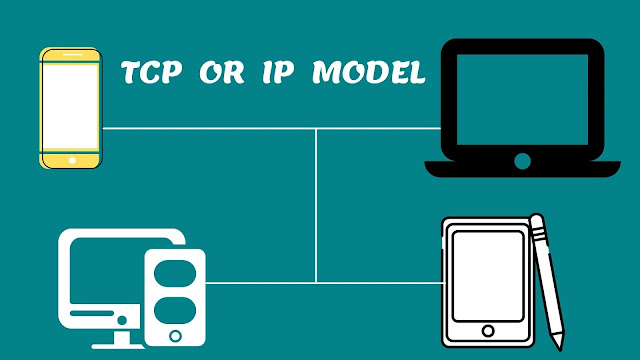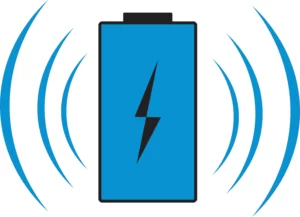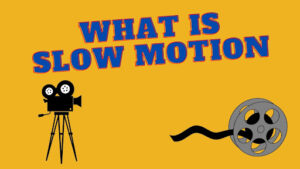TCP OR IP
TCP (Transmission Control Protocol) and IP (Internet
Protocol) are two different protocols that work together to provide reliable,
error-free data transfer over the internet.
TCP is a transport layer protocol that provides
reliable, error-free data transfer by using flow control and error correction
mechanisms. It establishes a reliable connection between two devices and
ensures that all data is received correctly. It uses a three-way handshake to
establish a connection and uses sequence numbers and acknowledgment messages
to ensure that all data is received in the correct order.
IP is an internet layer protocol that provides
addressing and routing services for data packets. It is a connectionless
protocol that is responsible for routing data packets to their destination
based on their IP address. IP packets are independent units of data that do not
establish a connection before transmitting data.
In summary, TCP is responsible for ensuring that
data is transmitted reliably and correctly, while IP is responsible for
addressing and routing data packets to their destination. They work together to
provide fundamental communication services for the internet.
**NOTE:- The Internet Protocol Suite is
designed in such a way that it cannot be owned by anyone. This means that it
cannot be the sole property of any private company and can be used by anyone in
the world. As a result, lots of different network companies started to support
the internet protocol.
The OSI model layers correspond in the following pattern
a.
The network access
layer responds to the physical and data link layers of the OSI model.
b.
The Internet layer corresponds to the OS1 network layer. The
duty of the protocols at this layer is to transfer packets through the network.
The main Internet layer protocol
is IP.
c.
The host-to-host layer corresponds roughly to the OSI transport layer.
At this layer, protocols communicate with peer processes in other hosts or
networked devices.
d.
Tine process/application layer corresponds to the
OSI session, presentation, and application layers. In this layer, the protocols
provide application services on the network. Examples of protocols are Telnet
(a terminal emulator) and FTP (File Transfer Protocol).
As the IP suite does not include lower-layer protocols, we shall discuss the
individual protocols at the middle layers.
The duty of the network and transport layer of the OSI model is to transport
packets across the internetwork. For network addressing the TCP and other IPs uses
three types of address. These are as follows
(a) Physical layers and data link uses Hardware or
physical address. Physical addresses are usually hard-coded into the network
cards with each device.
(b) IP addresses provide logical node IDs. They are expressed
in four-part dotted-decimal
notation.
(c) IP addresses are more complex to remember than logical names, For example,
SUJAYMRIDHA.COM. Every layer of TCP or IP suite has its own component protocol.
They are
(i) Application layer
Protocols: The
application layer is the topmost layer of the OSI (Open Systems
Interconnection) model and it is the interface between the application software
and the network. It is responsible for providing services to the application
software and controlling the communication between the application software and
the network. Some of the commonly used application layer protocols are:
1. HTTP
(Hypertext Transfer Protocol) – It is used for the transfer of web pages and
other information over the internet.
2. HTTPS
(HTTP Secure) – It is an extension of HTTP that provides secure communication
by encrypting the data being transferred.
3. FTP
(File Transfer Protocol) – It is used for the transfer of files between
computers over a network.
4. SMTP
(Simple Mail Transfer Protocol) – It is used for the transfer of email messages
over the internet.
5. DNS
(Domain Name System) – It is used to translate domain names into IP addresses,
allowing users to access websites using human-friendly domain names.
6. Telnet
– It allows users to remotely access a computer and execute commands as if they
were sitting in front of the computer.
7. SSH
(Secure Shell) – It is a secure alternative to Telnet that encrypts all data
being transferred, providing secure remote access to a computer.
8. DHCP
(Dynamic Host Configuration Protocol) – It is used to assign IP addresses to
devices on a network dynamically.
9. SNMP
(Simple Network Management Protocol) – It is used for the management and
monitoring of network devices.
10. NTP
(Network Time Protocol) – It is used to synchronize the clock of the devices on
a network with a reference clock.
These protocols are widely used in different types of
applications and services that run on the internet, such as web browsing,
email, file transfer, and network management.
(ii) Transport layer
protocols: The transport layer is the fourth layer of the OSI (Open Systems
Interconnection) model and it is responsible for providing reliable and
efficient data transfer between devices on a network. It sits between the
application layer and the network layer and provides end-to-end communication
between applications running on different devices. Some of the commonly used
transport layer protocols are:
1.
TCP (Transmission Control
Protocol) – It is a connection-oriented protocol that provides reliable,
error-free data transfer by using flow control and error correction mechanisms.
2.
UDP (User Datagram Protocol) –
It is a connectionless protocol that provides faster data transfer but with
less reliability compared to TCP.
3.
SCTP (Stream Control
Transmission Protocol) – It is a transport layer protocol that provides
reliable, error-free data transfer similar to TCP, but also supports multi-homing
and multi-streaming.
4.
DCCP (Datagram Congestion
Control Protocol) – It is a transport layer protocol that provides flow control
and congestion avoidance mechanisms for real-time applications like streaming
media and online gaming.
5.
RTP (Real-time Transport
Protocol) – It is a transport layer protocol that is used for the transfer of
real-time data such as audio, video, and other multimedia streams.
6.
DDP (Datagram Delivery
Protocol) – It is a transport layer protocol that provides reliable,
connection-oriented data transfer between devices on a network.
These protocols are widely used in different types of
applications and services that run on the internet, such as web browsing,
email, file transfer, streaming media, and online gaming. They are responsible
for ensuring that data is transmitted reliably and efficiently between devices
on a network.
(iii) Internet layer
protocols: The internet layer is the third layer of
the OSI (Open Systems Interconnection) model and it is responsible for
providing end-to-end communication between devices on a network by routing data
packets to their destination. It sits between the transport layer and the
network layer and provides the fundamental communication services for the
internet. Some of the commonly used internet layer protocols are:
IP (Internet Protocol) – It is a connectionless
protocol that provides addressing and routing services for data packets,
allowing them to reach their destination.
1.
ICMP (Internet Control Message
Protocol) – It is used for sending error messages and operational information
about network conditions, such as when a network is congested or when a host is
unavailable.
2.
ARP (Address Resolution
Protocol) – It is used to map a network layer address (such as an IP address)
to a link-layer address (such as a MAC address).
3.
RARP (Reverse Address
Resolution Protocol) – It is used to map a link-layer address to a network
layer address.
4.
IGMP (Internet Group
Management Protocol) – It is used for multicasting, allowing a single source to
send data to multiple destinations simultaneously.
5.
ICMPv6 (Internet Control
Message Protocol version 6) – It is an updated version of ICMP that is used for
IPv6 networks.
These protocols work together to provide fundamental
communication services for the internet by addressing and routing data packets
to their destination. They are responsible for ensuring that data is
transmitted reliably and efficiently between devices on a network.
(iv) Network layer protocols: The network layer is the second layer of the
OSI (Open Systems Interconnection) model, and it is responsible for providing
logical addressing and routing services for data packets. It sits between the
internet layer and the data link layer, and it provides the means for data to
travel between devices on different networks. Some of the commonly used network
layer protocols are:
1. IP
(Internet Protocol) – It is a connectionless protocol that provides addressing
and routing services for data packets, allowing them to reach their
destination.
2. IPv4
(Internet Protocol version 4) – It is an older version of IP that uses 32-bit
addresses, allowing for a maximum of 4.3 billion unique addresses.
3. IPv6
(Internet Protocol version 6) – It is a newer version of IP that uses 128-bit
addresses, providing a much larger number of unique addresses.
4. ICMP
(Internet Control Message Protocol) – It is used for sending error messages and
operational information about network conditions, such as when a network is
congested or when a host is unavailable.
5. ICMPv6
(Internet Control Message Protocol version 6) – It is an updated version of
ICMP that is used for IPv6 networks.
6. OSPF
(Open Shortest Path First) – It is a routing protocol used for routing in IP
networks.
7. BGP
(Border Gateway Protocol) – It is a routing protocol used for routing on the
Internet.
These
protocols work together to provide addressing and routing services for data
packets, allowing them to reach their destination. They are responsible for
ensuring that data is transmitted reliably and efficiently between devices on
different networks.
**NOTE:- TCP/IP is a protocol suite that is constantly evolving and whose development is
steered by such bodies as the Internet Society (ISOC), the Internet
Architecture Board (IAB), and the Internet Engineering Task Force (ETF ). The
current version of TCPRP is Called IPv4 (Internet Protocol version 4). A new
version called IPv6 is under implementation.





